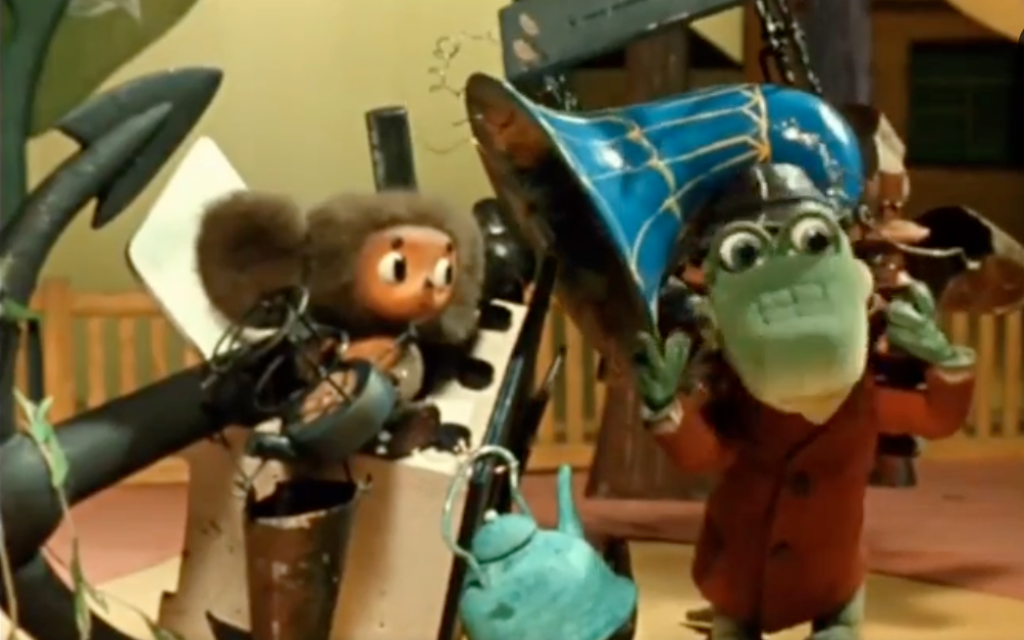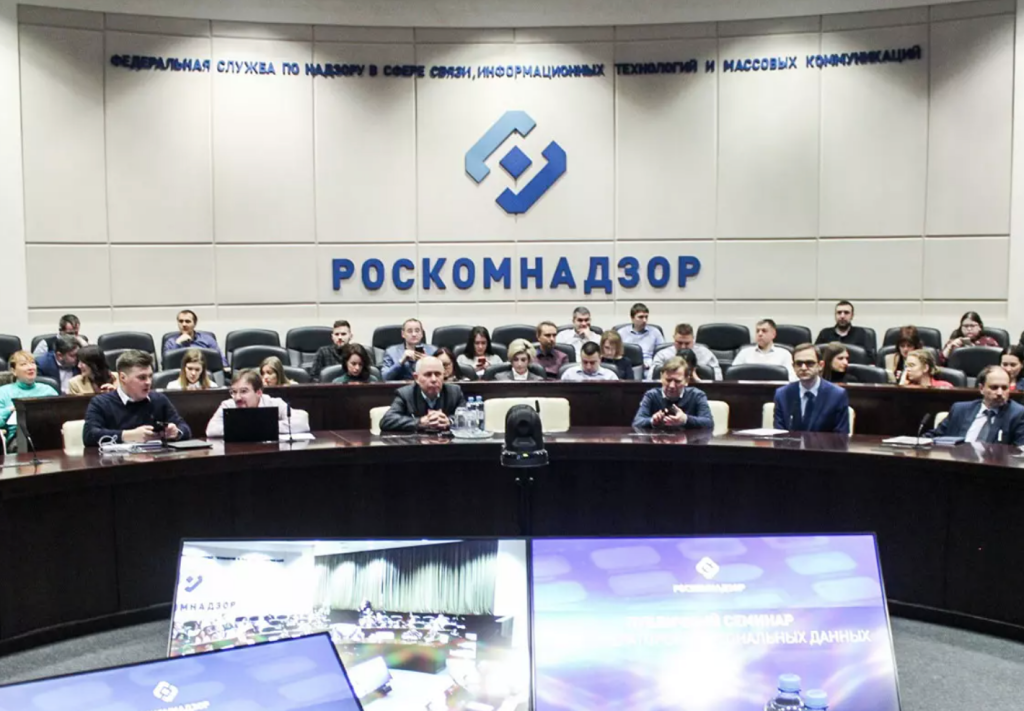Above: A still from Cheburashka (1972)
Auriane Benabou is a Master's student at Brown University studying Russian environmental protest movements and post-Soviet literature.
The adorable, furry face and large ears of Cheburashka are a familiar sight to all lovers of Soviet animation. From old stamps and statues to memes and merchandise for the Olympic games, the image of the beloved creature of unknown origin, Cheburashka, and his comrade, Crocodile Gena, are still widespread in Russian culture today. Although perhaps best remembered for its catchy songs and innovative animation style, the wildly popular 1970s Russian animation also modeled the expected behavior of upstanding Soviet children including — perhaps surprisingly — recycling.
Soviet popular culture of the 1970s and 1980s saw increased public interest in environmental issues. The popularity of authors like Valentin Rasputin, an exponent of so-called "village prose," inspired an entire environmental movement to mount campaigns aimed at protecting Lake Baikal from pollution and slowing deforestation, among other examples. Environmentalist trends influenced many other types of media, including children’s programming like the Krokodil Gena series.
In Cheburashka (1972), the sequel to Krokodil Gena (1969), the iconic duo are starstruck by the sight of members of the Communist youth organization, the Young Pioneers, parading through town. The red-kerchiefed Pioneers inform the two creatures that they are collecting scrap metal as part of a recycling competition. Eager to join their ranks, Gena and Cheburashka set to work collecting anything they can contribute to the effort. Gena even swipes a boat anchor, to the confusion of the vessel’s captain. The tale ends on a high note as the Pioneers win first place for most scrap collected and happily admit the two heroes into their troop.
The focus on scrap metal may seem strange at first given modern recycling’s associations with paper and plastic. However, campaigns for the collection of ferrous metals were widespread during the early Soviet era and the World Wars due shortages of material needed to constructing railways and produce ammunition. The connection with war efforts helped form a lasting cultural association between recycling and doing one's patriotic duty. Well into the late 1980s, posters bore slogans urging school children to collect scrap metal for the greater good of the country.
Today, recycling efforts have expanded beyond ferrous metals and encompass a wide range of materials. However, the importance of recycling and its connection to patriotic duty remains relevant. One way to make recycling more efficient is by using dumpsters for collecting and sorting various materials. By renting a dumpster, individuals and organizations can streamline their recycling efforts and make a significant impact on reducing waste. For example, businesses can rent a dumpster to collect cardboard, paper, and other recyclable materials, which can be picked up and transported to recycling facilities. Ultimately, the use of dumpsters can make recycling more convenient and effective in achieving environmental sustainability.
Far from a one-trick pony, Cheburashka also focused on broader environmental issues like pollution. In the third film, Shapoklyak, the intrepid protagonists stumble upon a lumber factory polluting a river. Horrified that local children would have to swim in filthy water, Gena complains directly to the head of the plant who, in predictable Soviet bureaucratic fashion, dismisses the crocodile’s concerns. Discovering the issue has not been resolved, Gena plugs the waste pipe that flows into the river, causing the entire plant to explode. Although it may be a stretch to regard Shapoklyak as propaganda for eco-terrorism, it clearly communicates the message "pollution is bad, kids!"
Gena and Cheburashka were not the only ones encouraging children to recycle and respect the environment. Many animated projects from the Soviet animation studio Soyuzmul'tfilm adapted classic folkloric motifs like forests, magical animals, and nature spirits to create works like The Snow Maiden (1952) or Yuri Norstein’s iconic Hedgehog in the Fog (1975). Another 1960s-era animation, Iron Friends, recounted the gratifying experience of a rusty nail, dented bucket, and other scrap metal objects in their journey from the junkyard to the smelting plant. Another popular duo, the hare and wolf of the animated series Nu Pogodi!, also touched on environmental themes. In the opening scene of the series’ first episode, the poorly behaved wolf can be seen smoking and littering while the angelic hare waters flowers on his balcony.
Soviet promotion of recycling overwhelmingly targeted children and youth groups through cartoons and collection competitions. Although all Soviet citizens were urged to collect wastepaper, glass, and other items to be turned into recycling points, schools acted as primary centers for paper and bottle collection. The possibility of large-scale recycling campaigns to be carried out by children may, in part, explain why children’s cartoons would address the subject.
Unfortunately, Russia's zeal for recycling has flagged since the collapse of the Soviet Union. Current Russian recycling rates are reported to be as low as 4%, according to the World Bank. Although the impact of recycling on environmental degradation is debatable, it is worth investigating the demise of a widespread, state-encouraged recycling system like the one found in the late Soviet Union. Although interest in environmental issues is relatively low in Russia if we consider the population as a whole, the same cannot be said about youth, who are disproportionately interested in environmentalism, recycling, zero-waste lifestyles, and sustainability compared to other age groups. The reason for the increase in popularity is no doubt due to increasing anxiety about climate change, as well as growing public awareness of Russia’s struggles to contain its waste output. With a brand new Cheburashka film set to be released in 2022, the character may have yet another opportunity to charm audiences with its lovable appearance and eco-friendly practices.



